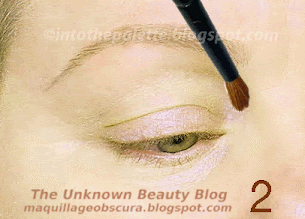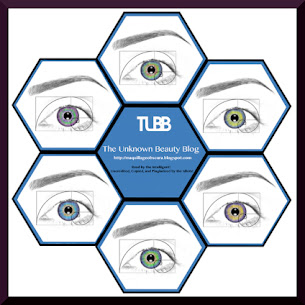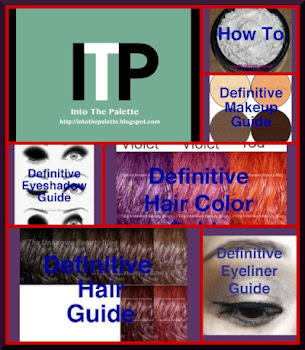I figured that it would be important to have a post on concealers and neutralizers and touch on the subject of highlighting and contouring. When I didn't understand makeup, I really didn't pay any attention to concealers.
I didn't even know and cared that neutralizers existed, I just wanted to play with all the color stuff I had. In fact, my stash probably consisted of a box full of fun and one concealer! What was I thinking? Well, obviously nothing in the way of correction.
You may be asking what is the difference between concealers and neutralizers. Concealers conceal. Neutralizers neutralize. Simple answer! My post is finished! Oh, wait I should elaborate. Concealers hide the little flaws that you might have. It prepares the face for a blank canvas before foundation (when used) and gives you an idea of how much foundation should be applied and where. Yes, you are allowed to apply concealer after foundation if you find it didn't cover. No one is going to tell you it is wrong until it becomes a makeup law! However, sometimes the concealer may not be enough. It might look grey or ashy once applied onto the discolored area. This is when you have to neutralize the discoloration.
Do you have to neutralize? No, but sometimes no matter what you do, that area shows up discolored when a ton of concealer is applied; then it looks cakey and you feel old and grumpy and your entire day is ruined because someone commented, "you look awful". What you wanted to achieve with a concealer actually did nothing. You need to neutralize the discoloration to prepare it for the concealer. Here is a basic guide:
GREEN neutralizes red.
YELLOW neutralizes red.
PEACH (orange) neutralizes blue/purple.
PINK neutralizes brown.
You are probably reading this and saying, "Hey, two colors neutralize red." Yes, genius there are two colors and sometimes which you choose can make a difference. The green will neutralize the redness of skin tones of ghost white to the fair. It can also be used to neutralize extreme redness on all skin tones. However, it can also cast some sallowness on skintones darker than fair. Don't want to walk around looking like a zombie. Yellow works for skin tones darker than fair. Peach is the one to use for dark circles and pink is the one for age spots or the brown discolorations.
Do neutralizers cover the discoloration? Yes and no. Some neutralizers are made to only neutralize transparently, others offer full coverage to actually cover the color opaquely (example: tattoo). Whichever you choose, just remember what color is used to neutralize what.
Are neutralizers labeled as neutralizers? Some are, some aren't. Ben Nye has neutralizer wheels called Total Cover All. SK-100 ( MY-1, MY-2, MO-1, MO-11, MO-2, CC-1) is for any skin tones darker than fair. SK-200 (GC-1 CC-1 HY-1 MO-1 CC-2 CH-0) is for skin tones from ghost white to fair. Ben Nye labels his colors this way, MY is for Mellow Yellow. This is to neutralize red tones. MO is for Mellow Orange which neutralizes blue. CC is Coverette Cover Up which is pigmented concealer. CH is Cream Highlight. GC is Green Concealer. HY is Highlight Yellow. (All these colors can be mixed, but I would only suggest that if you know what you are doing.) These colors from what I have learned neutralize the discoloration but don't expect it to match your skin tone and don't whine when it doesn't. A concealer (or foundation) does go over this.
Joe Blasco offers neutralizers that are skin tone in color and leaves out the guesswork. He just labels his neutralizers after the discolorations: red neutralizer, blue neutralizer, and brown neutralizer. Then each neutralizer is labeled according to the depth of the skin tones: fairest of fair to dark. #1 being for fairest of fair, "Special" for light skintones, #2 for medium, and #3 for dark.
After the neutralizing, concealers are applied on top. You can stop at the application of concealer or go on to the application of foundation. Concealers usually are skin tone colors. The depth of you skin, ghost white to dark is what determines the shade. I usually buy a concealer wheel or palette to have every option in front of me. These are very handy when the seasons change. My skin becomes more tan during the summer, so my concealer and neutralizer changes. Two that I like are Viseart and Temptu.
Temptu has five gradation of colors that work on from the whitest to the darkest. Not only are they gradations, but if you look closely the undertones are different.
- pink ivory
- yellow beige
- peach
- pink
- yellow brown.
I can use the undertones as neutralizers. I can also lighten each one with color 1. I can use color 5 as a contour and color 1 as a highlight. It is a very versatile wheel! Not only that, it is a pro line for HD media so the ingredients are very refined and smooth and highly pigmented. A little goes a long way. Start with thin layers to avoid cakiness.
Viseart is another concealer/neutralizer palette which I find useful. The colors contain from top row left to right: 1st-a peach base to counteract blue undertones; 2nd- pink base to counteract brown; 3rd-amber to counteract blue undertones in darker skin tones; 4th-brique red (slight rose undertone) to use as a cream blush or lip tint. Second row from left to right: 1st-terracotta color to use as a cream blush or lip tint; 2nd-light yellow beige to conceal; 3rd- medium beige to conceal; 4th-dark beige to conceal. Bottom row from left to right: 1st-ochre brown for contour and concealing; 2nd-medium tan brown to conceal and contour; 3rd-dark brown to contour; 4th-green to neutralize red. These all can be mixed to get a custom color. Like Temptu, this is another pro line and a little goes a long way.
All of these are creams that I described. But you can use powders also. For example, if you have blue discoloration on your eyelid but you are not in the mood to apply a cream neutralizer or you don't like anything creamy on the lid, you can always use a matte peach or matte peach undertone eyeshadow. Remember, an eyeshadow does not know it is just an eyeshadow, it is just a tablet of colored powder. Neutralize the lid then go on to the usual eyeshadow routine. (More on neutral eyeshadows will be covered in a future posting.)
I hope I have somewhat explained a bit on concealers and neutralizers. Nothing fancy or new, just what has been around for decades in make up and color theory. Now go look, stare, and play with your concealers!















